Do you want to help us protecting biodiversity? Be part of this campaign and help us stop the invasion of these species! We have selected for you other 10 invasive species to learn about them and if you like them… craft them! Send us the pictures of your creations and we will publish them in “your crafts” section of this website and in our social media channels.
Also, we will raffle among all participants the original crafts made by Stéphanie, Wei, Laura and Mónica.

Grey squirrel · Sciurus carolinensis ·
These American squirrels are characterized by their grey fur and impressive climbing skills. At the end of the 19th century, they were introduced to some European countries for ornamental purposes in parks but now they are. They are constantly expanding and today the escapes or releases from people who have them as pets are worsening the situation. They feed on cereal and fruit crops and strip the bark of trees exposing them to insect and fungus infections. They have almost wiped out the European red squirrel because they compete for resources and also because they are vectors of the poxvirus. This virus is lethal for their European relative and a threat for the public health. (Photo credit: BirdPhotos.com)
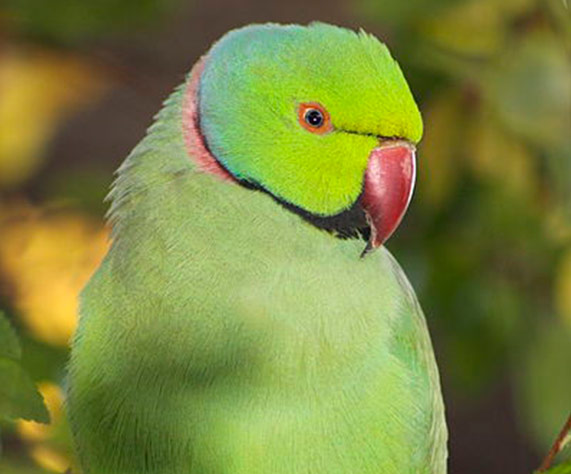
Rose-ringed parakeet · Psittacula krameri ·
These tropical birds are native to central Africa and Southeast Asia, but their exotic look and ability to mimic human speech has made them popular pets. Now, they have been introduced worldwide and have invaded many cities where they compete with local species, such as the Eurasian nuthatch which is struggling to survive. Also, in the countryside they are considered one of the most destructive bird pests for agriculture because they feed on crops and damage blossoms, buds and shrubs. (Photo credit: Derek Keats)

American Bullfrog · Lithobates catesbeianus ·
This North American frog owes its name to its characteristic call that reminds of the mooing of cows or roar of bulls. They live in different aquatic environments and can weight up to half a kilo! They can colonise different habitats, preferably those that have been modified by humans like ditches, reservoirs or ponds. They fed on many species and compete with native amphibians for resources. Additionally, they are transmitters of dangerous pathogens for local fauna. (Photo credit: Ryan Hodnett)
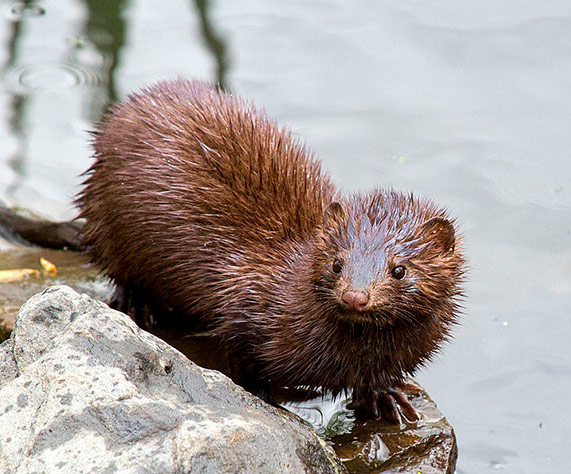
American Mink · Neovison vison ·
These small carnivores are native to North America and Mexico. They live along the coast or next to rivers and lakes and were introduced to Europe for fur farming in the 20’s. As a result of escapes and deliberate releases by animal rights activists they have spread around the continent. These furry animals not only compete for food but are also very aggressive, becoming a threat for local species like the European mink which is now risking extinction! Also they transmit diseases and cause trouble for human activities like fisheries, farming or eco-tourism. (Photo credit: Needsmoreritalin)
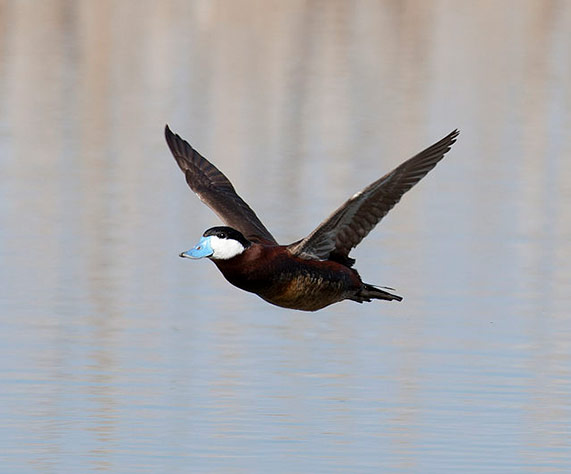
Ruddy duck · Oxyura jamaicensis ·
These showy American ducks live in freshwater habitats and feed on molluscs, insects, seeds and water plants. Due to its beautiful colours, this species was imported to the UK to be part of a private collection. However, it eventually escaped and propagated throughout Europe. Today it is present in at least 20 countries where it is a threat to local biodiversity, specially to its European relative, the white headed duck. They hybridise with this species, which is now at serious risk! (Photo credit: USFWS Mountain-Prairie)
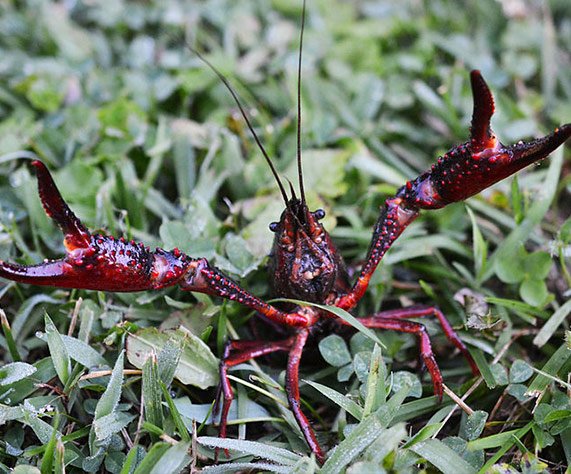
Red swamp crayfish · Procambarus clarkii ·
These aggressive American crustaceans are covered in spines and can take over many different wetlands. Unfortunately, they are tough to get rid of since they can survive long dry periods by digging deep burrows. Among the many troubles they make, we can say that they transmit a pathogen that is lethal to European crayfish species like the white-clawed crayfish and are voracious eaters of all kind of invertebrates, exhausting the resources of invaded places.

Japanese Knotweed · Fallopia japonica ·
This plant is native to east Asia and can grow 4 metres in height and roots can reach up to 20 metres! It was originally introduced as an ornamental plant to be used in gardens. Unlike other plants, it can be pollinated by any type of insect quickly becoming invasive across the continent. Where it grows it’s a tough competitor, producing toxic chemicals and shading out many native species. Also the strong roots damage infrastructures like buildings, water channels or roads and millions of euros are invested every year to fight its invasion. (Photo credit: H. Zell)
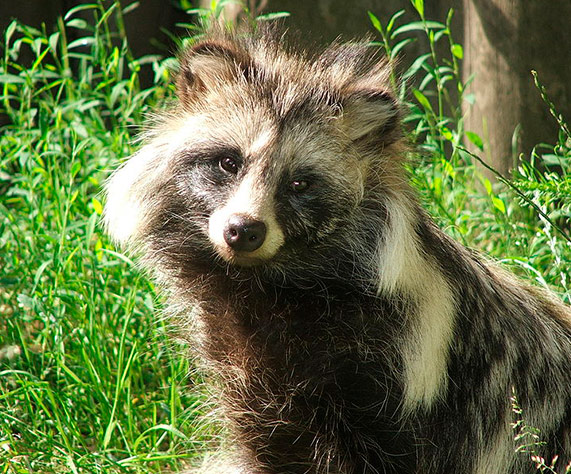
Raccoon dog · Nyctereutes procyonoides·
These fox-sized mammals are native to Asia and have adapted to live in different climates and environmental conditions. They reproduce a lot, with up to 16 pups per year! They were introduced between the 20’s and 50’s for fur farming but now it is widely distributed in European ecosystems. They are a threat for other native animals and humans, because they transmit diseases like sarcoptic mange, trichinella worms, fox tapeworm or rabies. (Photo credit: I, Pkuczynski)

Coypu · Myocastor coypus ·
This big rodent with brown thick fur is native to the Patagonian region of South America. They are very good swimmers and are highly reproductive: they can have up to 15 offspring per year. Initially they were imported for fur farming but escapes and deliberate releases led to a wide distribution.These animals damage infrastructures like riverbanks or drainage systems, increasing the risk of floods. Also they are pests for agriculture because they feed on cereal, fruits and nuts. Millions of Euros are invested for its control every year in countries like UK and Italy. (Photo credit: Norbert Nagel)
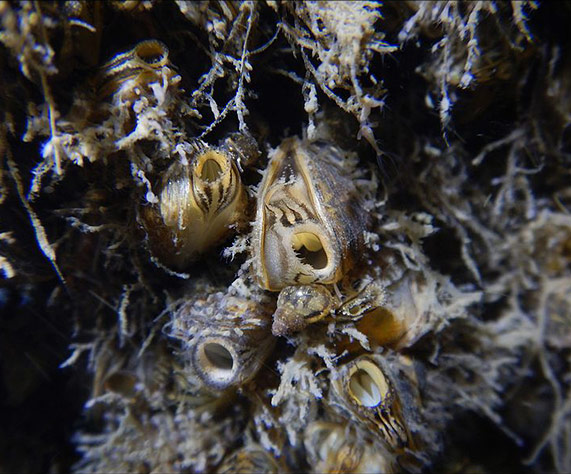
Zebra mussel · Dreissena polymorpha ·
This freshwater mollusc owes its name to the dark and light pattern present on its shell. It is native to the Caspian and Black Sea and was accidentally introduced to Europe attached to ship hulls, buoys or fishing equipment. They form huge clusters covering infrastructures, blocking lock gates, irrigation canals and pipelines. Also they they compete with other filter-feeding organisms like the critically endangered Spengler’s freshwater mussel. (Photo credit: Lamiot)
